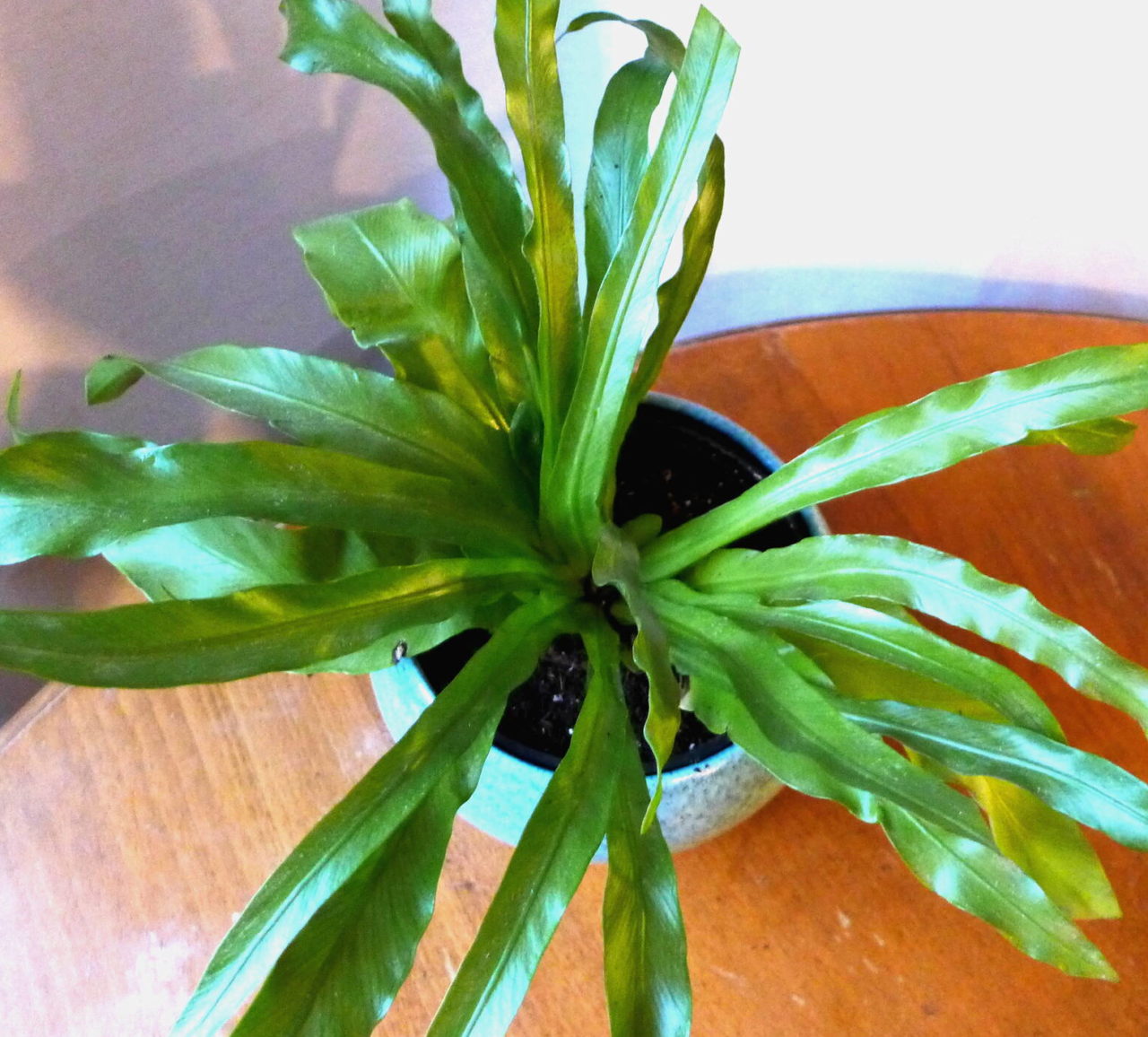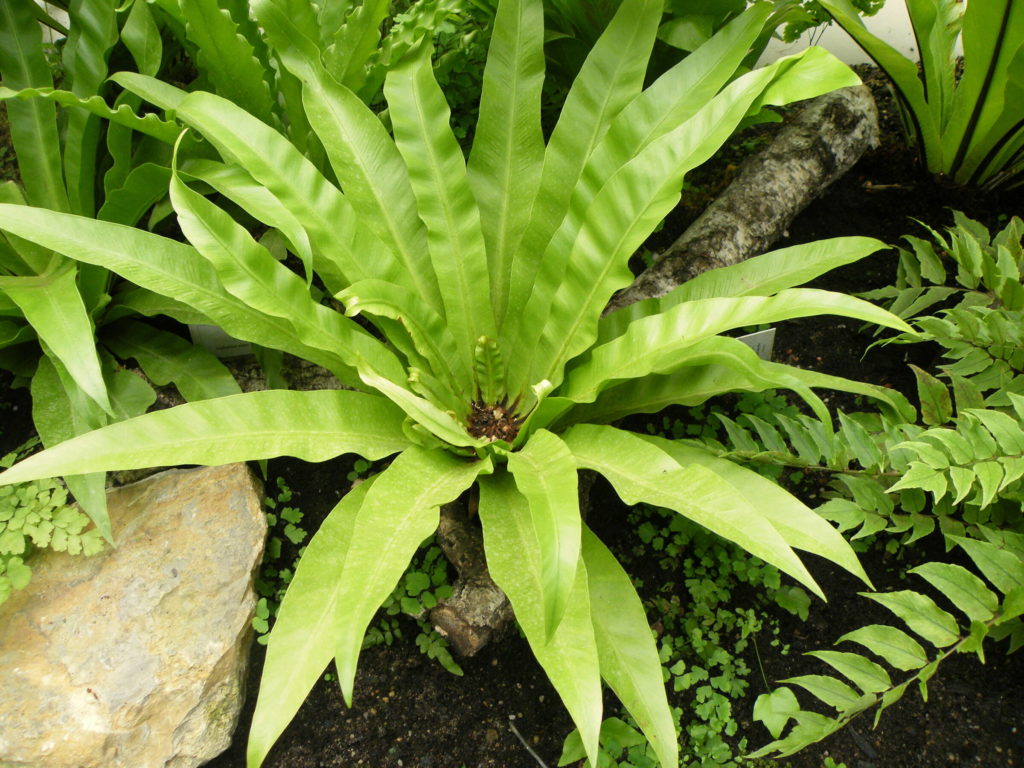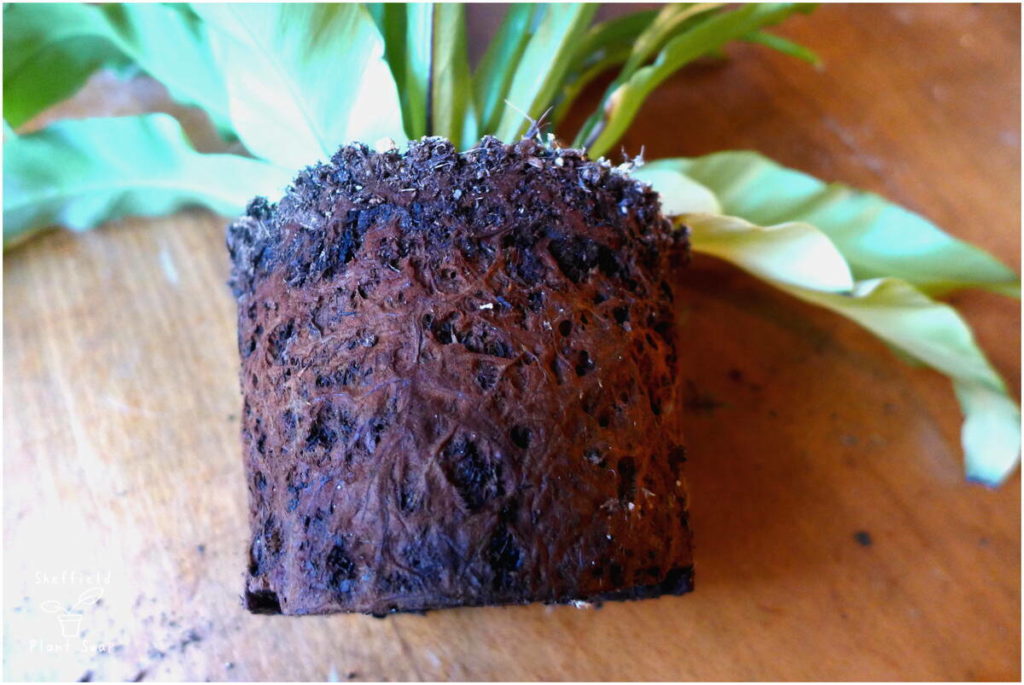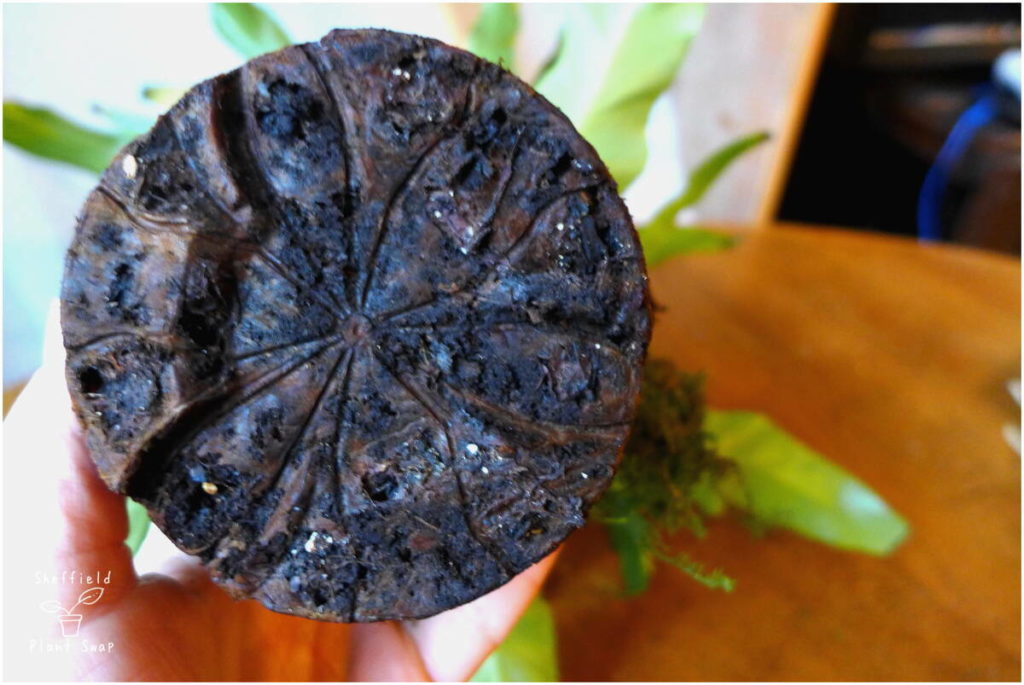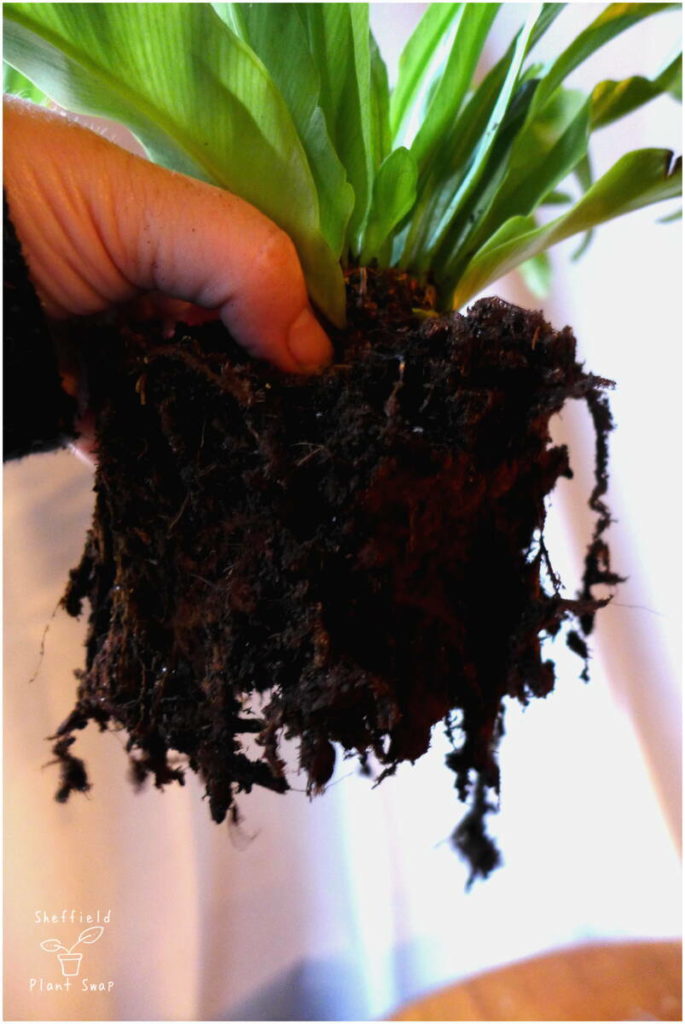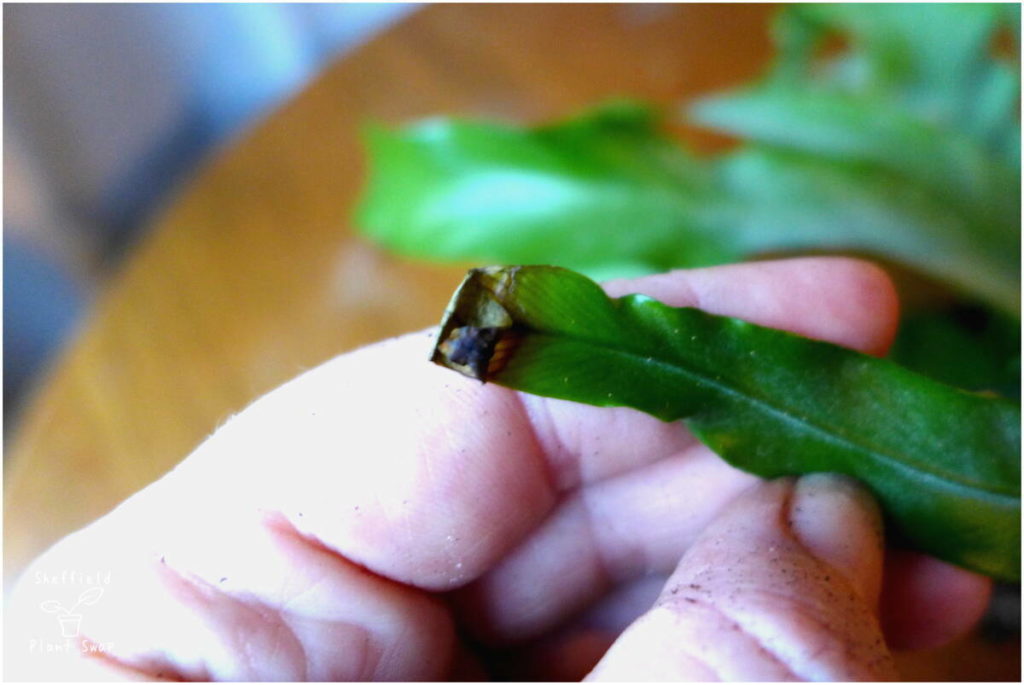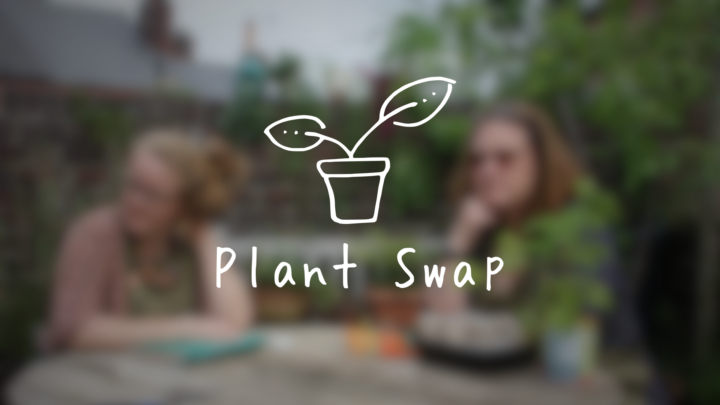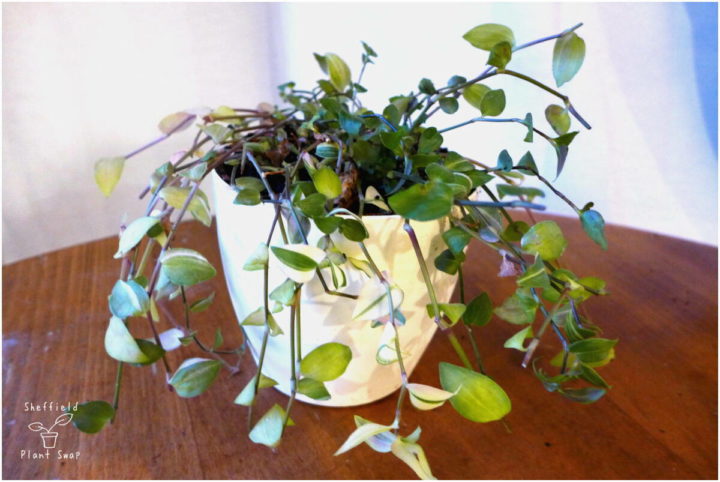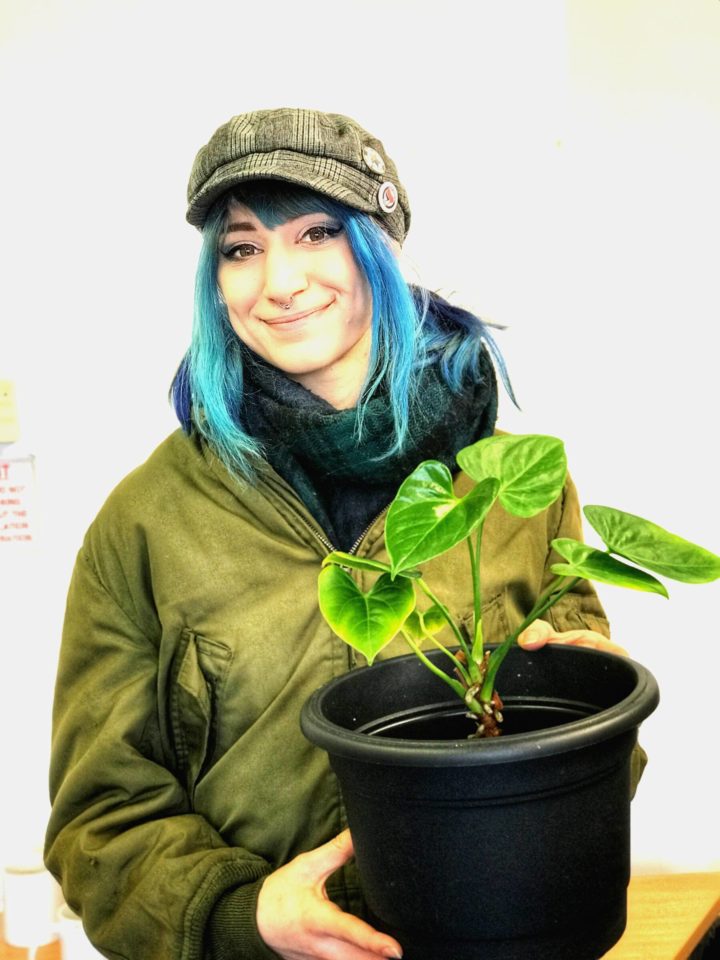I’ve got a sad looking Asplenium nidus (birds nest fern) that needs some extra care and thought it would be a good subject for a blog post following it’s progress. In fact I think it could be a great starting point for a series on how to revive poorly plants.
House plant clinic
I get given a lot of poorly plants. And I take home unclaimed plants from plant swap. And sometimes I even buy sick plants because I feel sorry for them.
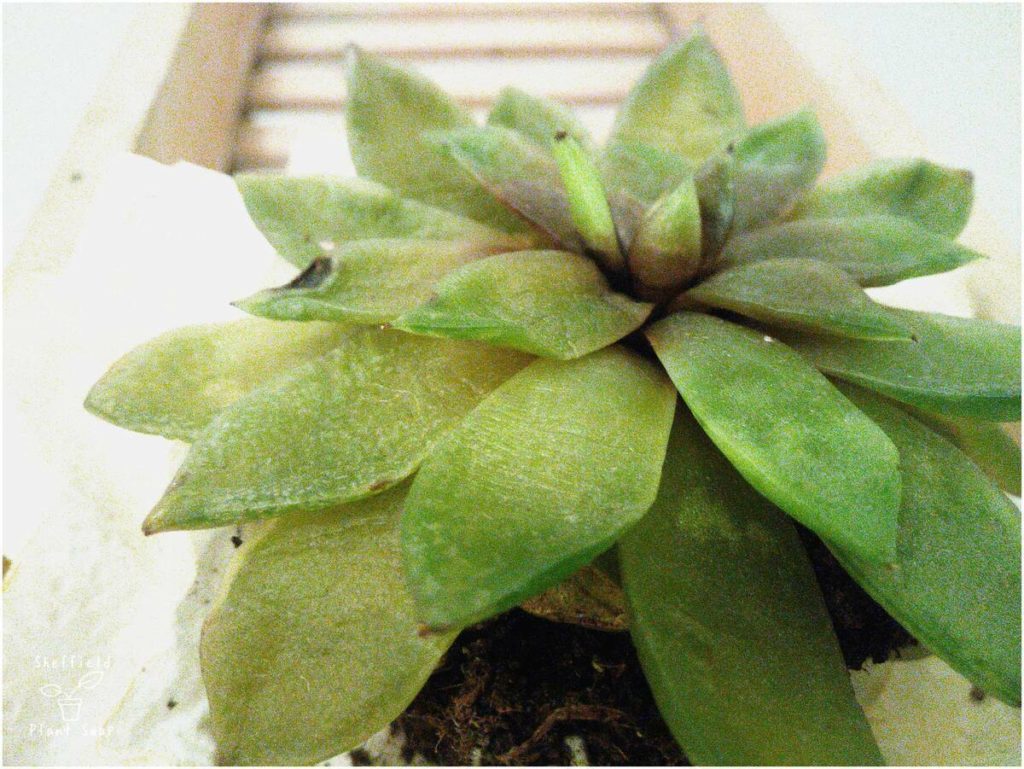
Oh and occasionally I slip up and do something silly, neglectful or just plain idiotic…like the time I drowned my succulent.
There is something strangely addictive in bringing back plans from the dead so I thought it might be a good topic for a blog series. You get to see my successes and my failures, and it might encourage you to try a few plant rescues too. These are great all round skills for improving your plant parenting skills.
Oh and hone these skills and the plant bargain shelf will become your playground with ever more extreme challenges to pit yourself against!
Plant Clinic No. 1: Asplenium nidus
This Asplenium nidus aka the birds nest fern is a nice easy one to start with.
I have had the plant for a while now; it hasn’t grown any new leaves and the existing leaves are looking dull and starting to brown and shrivel up.
It needs some TLC and is clearly just one step away from being very unhappy.
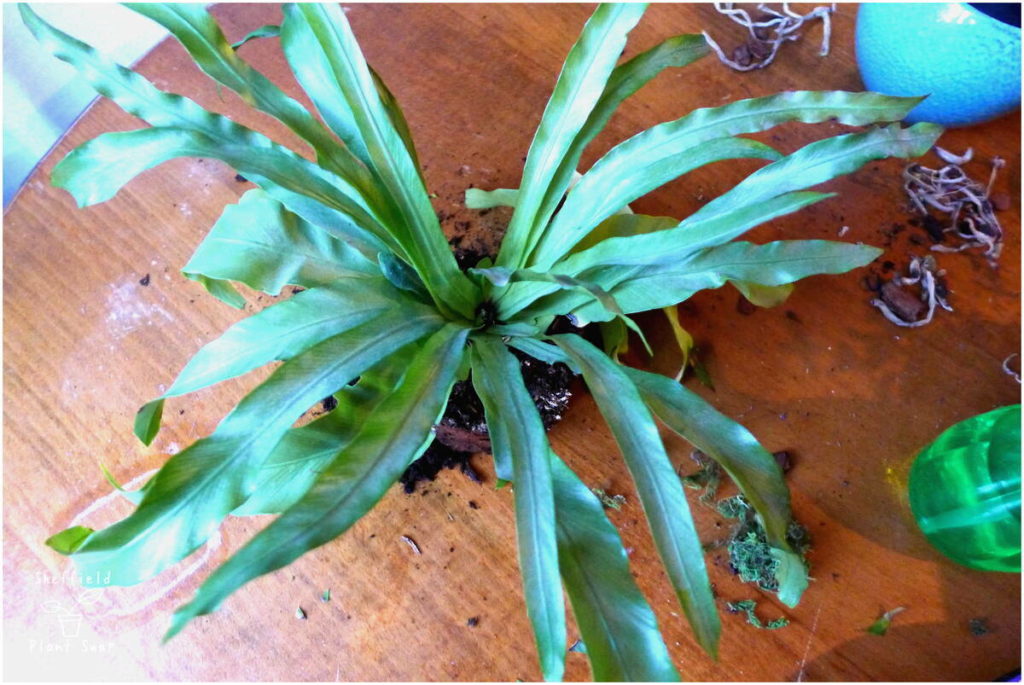
Being alert to your plants means that you can take action before your plant declines too far and becomes too sick to fix. This is definitely one of those preventative plant rescue stories rather than a Lazurus arisen from the dead!
1. Symptoms: What is wrong with my Asplenium nidus?
The signs my plant is less than fully satisfied with life are that it has:
- Yellow patches on leaves
- Brown, crispy leaf tips
- Dull and narrow leaves
- No new growth
Overall, it is just clearly less lush, less green and less happy than I’d like it to be. Sometimes we don’t realise that our plant is looking unhealthy unless you see a picture of what a healthy plant should look like so it’s always worth googling your plant. The plant on the right below is a healthy specimen thriving in a botanical gardens.
2. Diagnosis: What is causing this?
First things first is to have a really good look over it. Initial indications are good, no signs of pests or diseases and the soil is moist but not sopping. This is about right for a fern that enjoys lots of moisture and doesn’t like drying out.
The brown leaf tips are probably a symptom of a general lack of humidity. This plant lives on a bookshelf in indirect light in my bedroom which is not particularly humid so probably is not really meeting it’s needs.
It can survive but it will not thrive without more humidity. Light levels and water levels are probably about right.
Next I ease the pot down to take a look at the roots and it is immediately apparent that the plant is severely pot bound. As in probably never been repotted.
Ever.
Whoops!
There is so little soil left in the pot that you can see the imprint of pot actually in root ball!
It also feels incredibly light and spongy to the touch and although it is slightly moist feeling, there is no soil to actually hold any moisture so the only moisture I’m feeling is really from the plant.
3. Treatment: How do I rescue my Asplenium nidus?
So now I think I know what is wrong with my Asplenium nidus, I can start fixing it.
If you find yourself with a similar situation these are the steps to help the plant recover.
Repotting
The first priority is to release it’s roots by repotting it. This will give it space to grow, increase the amount of moisture available to it from the soil and
- Ease the plant out of the pot entirely
- Run your fingers through and tease out roots – pretend you are giving a scalp massage!
- Be gentle but don’t worry about a few roots breaking, the key is to break them out of their self-made cage so when you repot the plant its roots can grow outwards.
- Repot into new larger pot (about 1-2cm bigger) with fresh organic-rich soil.
Appearance and health tracking
Next is to improve it’s appearance so that you don’t have to hide it away! It also is much easier to follow your plant’s health trajectory if you can spot new discolouration because you’ve removed all the previous discolouration. Tracking whether leaves develop brown tips or start yellowing is your first indicator as to whether your treatment has helped.
- Remove yellowing, brown, damaged or any other sad looking leaves
- Where just the tips are browning, trim with a pair of clean nail scissors. Most plants are perfectly happy with this. The benefits are that it removes unsightly brown tips without sacrificing the whole leaf.

Pro-Tip: If you trim to a point it masks the amputation!
Right plant, right place
Asplenium nidus are ferns and as is the case with many ferns they thrive in damp and humid environments. Native to tropical southeastern Asia, eastern Australia, India and eastern Africa they can survive as epiphytes or as terrestrial plants. Their basic needs are for humid, moist shaded forests.
In contrast my poor plant has been languishing in my bedroom with cool, dry air. I’ve definitely not found the right plant for the right place. My fern is going to have to find a new, more humid home.
Bathrooms are ideal as they have the exactly right kind of moist warm environment that these ferns thrive in. Sadly my bathroom is also windowless so that is a wee bit too dark for it. The next best room is the kitchen as that can get pretty humid from cooking, laundry and lots of kettle boiling as we both work from home and drink copious cups of tea!
For now to give it a humidity boost, I water it and sit it on a pebble tray inside a covered glass tank. This is temporary solution for now to give it a boost of humidity and when I see some new growth appearing it can take up permanent residence in the kitchen.
Progress tracking
So this is just the start of my plant’s recovery, no miracles will happen overnight so the next part is lots of patience and careful watching. I will post progress pics of this plant on our Instagram so you can follow it’s recovery.
Your plant recovery stories
I’d love to hear about the plants you have brought back from the dead and any tips of tricks you have learnt.
Also any plants that you particularly struggle to keep alive and thriving that you’d like a plant rescue clinic for?

